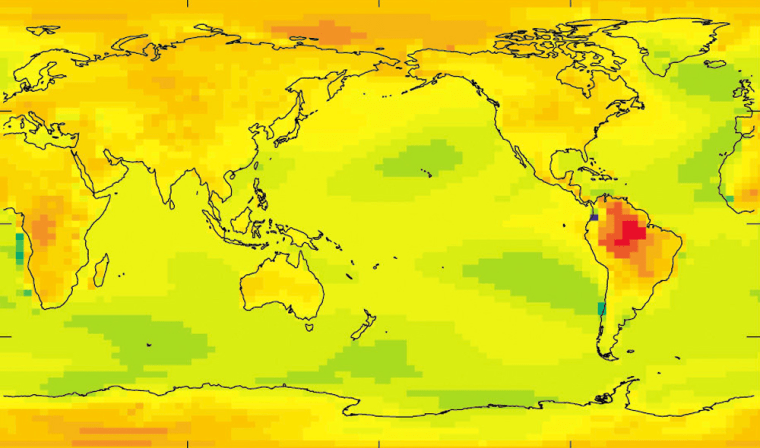Computer models for climate change allow for a global temperature rise of as much as 20 degrees Fahrenheit (11 degrees Celsius), according to the first results from the world’s largest climate-modeling experiment.
The amount of global warming generated by the models ranged from 4 to 20 degrees F (2 to 11 degrees C). The top end of that temperature range is twice as much as the maximum increases predicted in the past.
“Our experiment shows that increased levels of greenhouse gases could have a much greater impact on climate than previously thought,” said Oxford University's David Stainforth, chief scientist for the ClimatePrediction.net project.
It's not clear how likely such extreme cases might be. ClimatePrediction.net's experiment was aimed more at determining the uncertainty factor for current climate models than at charting the true course of future climate change. Nevertheless, the findings highlighted the debate over how industrial carbon-dioxide emissions could change the environment in the decades ahead.
Some scientists fear that higher CO2 levels will have dramatic effects, including higher global average temperatures, rising sea levels and increased flooding.
Doubling the carbon dioxide
For the purposes of the experiment, ClimatePrediction.net assumed that carbon-dioxide levels were double those found before the Industrial Revolution. Scientists estimate these levels will be reached by the middle of this century if greenhouse-gas emissions are not reduced. The differences in the predicted temperature rise resulted from different assumptions about climate sensitivity to CO2 levels.
“This is really just the beginning of the process to try and understand the uncertainty and predictions of climate change,” Stainforth said at a news conference.
He told reporters “it is entirely possible that even current levels of greenhouse gases, if stable and maintained for a long period of time, could lead to dangerous climate change.”
More than 95,000 people from 150 countries are taking part in the ClimatePrediction.net experiment to explore the possible impact of global warming. The project was conceived more than five years ago and launched in 2003. It is funded by Britain’s Natural Environment Research Council.
Free software
By downloading free software to their personal computers, participants run a version of Britain’s Met Office climate model. Different users are given different combinations of parameters to reflect a wide spectrum of future climate scenarios.
While their computers are idle, the program runs a climate simulation over days or weeks and automatically reports the results to Oxford University and other collaborating institutions around the world.
Together, the volunteers have simulated more than 4 million model years, donated 8,000 years of computer time and exceeded the processing power of the world’s largest supercomputers. The first results of the continuing experiment were reported in Thursday's issue of the journal Nature.
The results came as politicians and scientists continued to debate what should be done about the prospect of future climate change. The Kyoto Protocol, which is the main U.N. scheme to reduce greenhouse gases, aims to cut emissions of carbon dioxide by 5.2 percent below 1990 levels by 2008-2012. The protocol takes effect Feb. 16, but the Bush administration has withdrawn from the accord.
